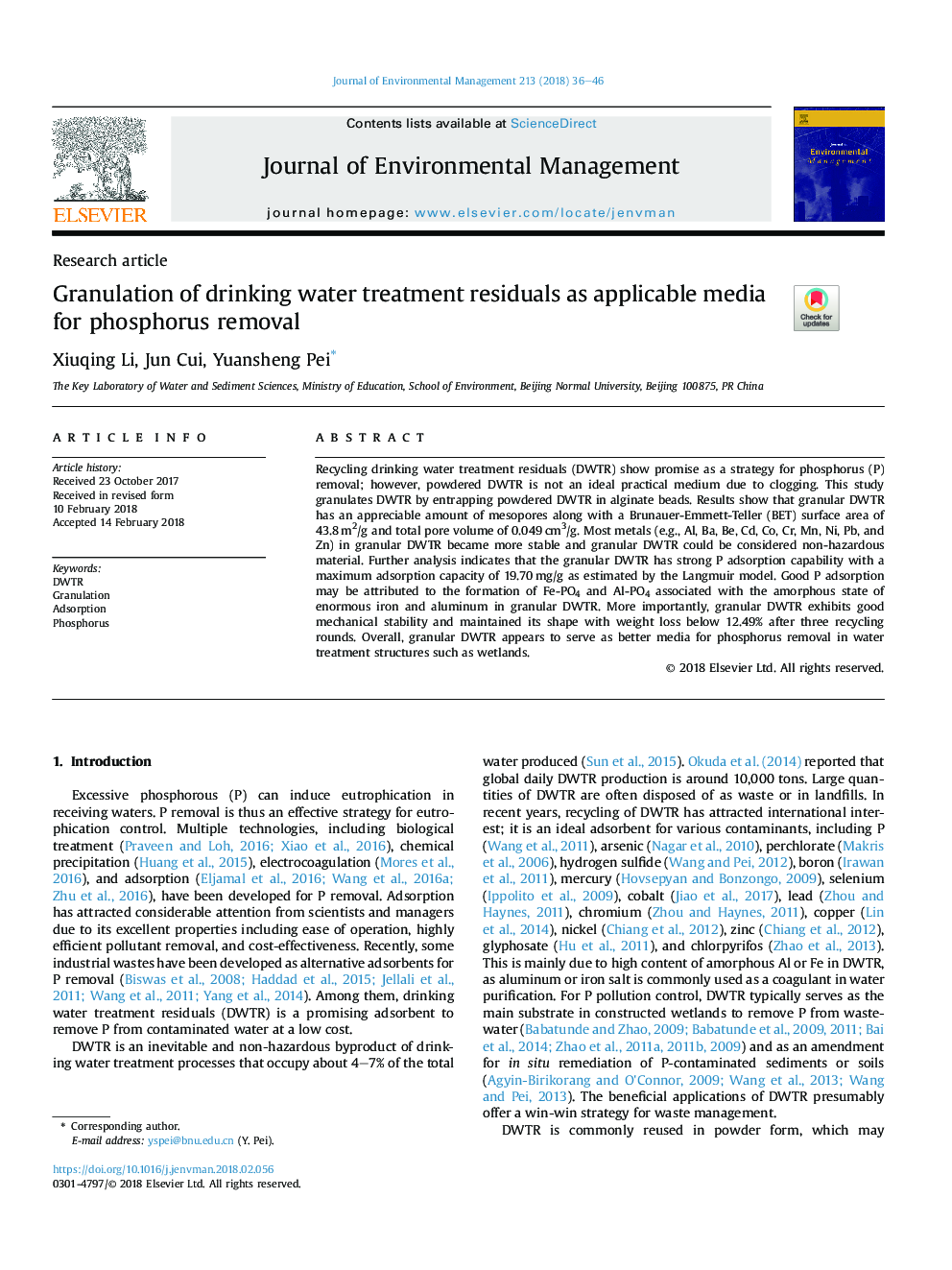| Article ID | Journal | Published Year | Pages | File Type |
|---|---|---|---|---|
| 7477583 | Journal of Environmental Management | 2018 | 11 Pages |
Abstract
Recycling drinking water treatment residuals (DWTR) show promise as a strategy for phosphorus (P) removal; however, powdered DWTR is not an ideal practical medium due to clogging. This study granulates DWTR by entrapping powdered DWTR in alginate beads. Results show that granular DWTR has an appreciable amount of mesopores along with a Brunauer-Emmett-Teller (BET) surface area of 43.8â¯m2/g and total pore volume of 0.049â¯cm3/g. Most metals (e.g., Al, Ba, Be, Cd, Co, Cr, Mn, Ni, Pb, and Zn) in granular DWTR became more stable and granular DWTR could be considered non-hazardous material. Further analysis indicates that the granular DWTR has strong P adsorption capability with a maximum adsorption capacity of 19.70â¯mg/g as estimated by the Langmuir model. Good P adsorption may be attributed to the formation of Fe-PO4 and Al-PO4 associated with the amorphous state of enormous iron and aluminum in granular DWTR. More importantly, granular DWTR exhibits good mechanical stability and maintained its shape with weight loss below 12.49% after three recycling rounds. Overall, granular DWTR appears to serve as better media for phosphorus removal in water treatment structures such as wetlands.
Keywords
Related Topics
Physical Sciences and Engineering
Energy
Renewable Energy, Sustainability and the Environment
Authors
Xiuqing Li, Jun Cui, Yuansheng Pei,
